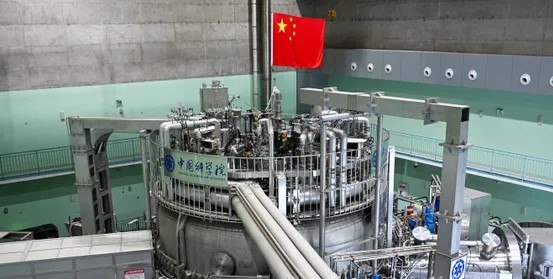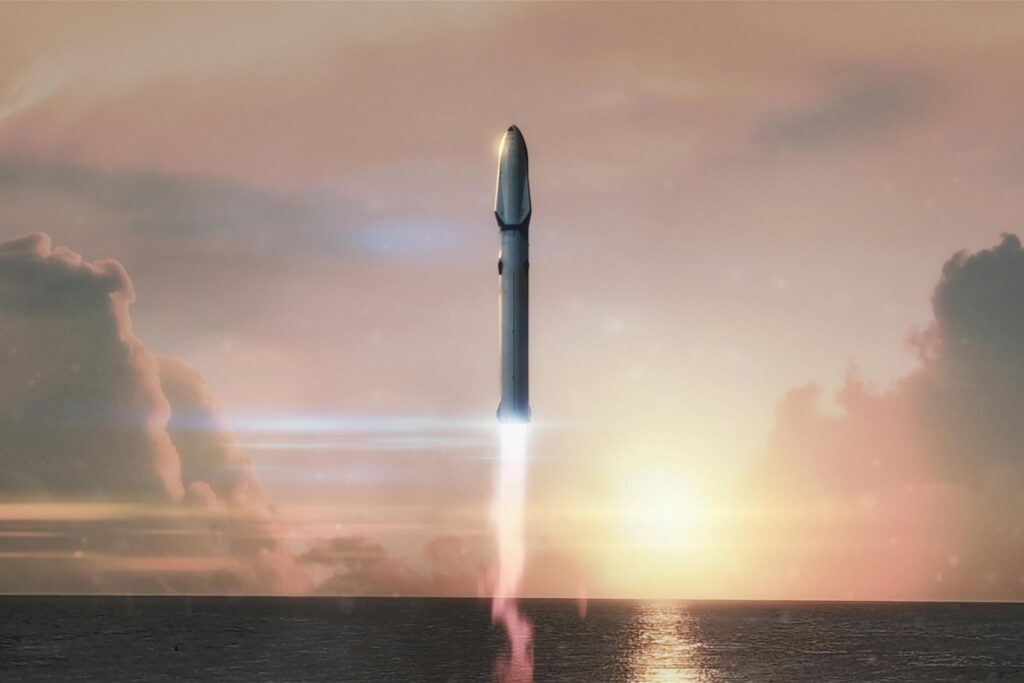Recent satellite images reveal that China is constructing one of the largest and most advanced laser fusion research facilities in the world. Located in Mianyang, this facility will be 50% larger than the U.S. National Ignition Facility (NIF), the biggest inertial confinement fusion (ICF) site. This discovery has surprised experts and raised concerns about its implications for clean energy and nuclear weapons research.
Understanding Inertial Confinement Fusion (ICF)
Before diving into China’s facility, it’s important to understand inertial confinement fusion (ICF). This method uses powerful lasers or energy sources to compress and heat a small pellet of hydrogen isotopes. The goal is to reach extreme temperatures that initiate fusion, mimicking the process that powers the sun.
Fusion, if achieved sustainably, could revolutionize energy production. Unlike fission, fusion does not produce long-lived radioactive waste or pose major risks of catastrophic failure. However, achieving controlled nuclear fusion remains one of the most significant scientific challenges.
How ICF Works
ICF research primarily involves using high-energy lasers to heat and compress a fuel pellet containing deuterium and tritium. When compressed to sufficient density and temperature, the atoms fuse, releasing immense amounts of energy. The challenge is sustaining this reaction long enough to generate net-positive energy.
The U.S. National Ignition Facility, based in California, has led ICF research for years. It employs a massive laser array to compress hydrogen isotopes, hoping to achieve ignition—a self-sustaining fusion reaction. Now, China’s new facility in Mianyang may soon rival the NIF in size and capability, signaling a major leap in fusion energy research.
China’s Ambitious New Facility in Mianyang
Satellite images show that China is constructing a facility in Mianyang. Experts believe it will include four laser bays and a central chamber for fusion experiments. Being 50% larger than NIF, it will be one of the most significant fusion research projects worldwide.
The Scope of the Project
China’s new laser fusion facility is expected to push the boundaries of fusion research. The project’s scale suggests China is serious about advancing clean energy and nuclear weapons technology. While the facility’s official focus is fusion energy, experts remain concerned about its possible military applications.
According to defense analysts, the technology used in fusion research can also be applied to simulate nuclear explosions. This capability could allow China to refine its nuclear weapons program without conducting real-world tests, raising international concerns.
Potential for Clean Energy Breakthroughs
Fusion energy is considered the holy grail of power generation. If scientists achieve commercial-scale fusion, it could replace fossil fuels and drastically cut greenhouse gas emissions. China’s investment in this technology highlights its ambition to lead the clean energy transition.
Overcoming Technical Challenges
The Mianyang facility could help overcome some of the technical challenges that have stalled progress in fusion energy. By developing more powerful lasers and improving compression techniques, China might bring the world closer to limitless, clean energy.
For fusion to become a viable power source, scientists must address issues like energy efficiency, plasma stability, and sustained ignition. The data gathered from experiments in Mianyang could help refine existing theories and drive future advancements.
The Global Impact of Fusion Energy
If successful, fusion energy could revolutionize the global energy landscape. With virtually limitless fuel sources, fusion power plants could supply the world’s electricity needs without producing harmful emissions. China’s focus on this research positions it at the forefront of this energy transformation.
Implications for Nuclear Weapons Research
Despite its focus on energy, concerns persist about military applications. Experts suggest the same laser technology could simulate nuclear explosions. This could help refine nuclear weapons without conducting real tests.
How Fusion Research Relates to Nuclear Weapons
Fusion experiments generate extreme pressures and temperatures similar to those in a nuclear detonation. This makes ICF a valuable tool for weapons scientists seeking to understand how nuclear devices behave under different conditions. Countries like the U.S. and Russia have also used similar methods to advance their nuclear programs without violating international test bans.
The Global Reaction
This possibility alarms global leaders. It may allow China to bypass treaties like the Comprehensive Nuclear-Test-Ban Treaty (CTBT). Using fusion to simulate nuclear detonations would provide critical insights into weapons performance while avoiding political consequences. As a result, international security analysts are closely monitoring China’s progress.
China’s Growing Influence in Fusion Energy
China has already made significant progress in fusion research. In 2021, its EAST (Experimental Advanced Superconducting Tokamak) set a world record for plasma confinement. The Mianyang facility builds on these successes, strengthening China’s position in the fusion race.
China’s Role in the Global Fusion Race
This commitment to fusion aligns with China’s broader energy strategy. The country already leads in renewable energy capacity. Investing in fusion technology shows its intent to dominate future clean energy markets.
With facilities like Mianyang and EAST, China is positioning itself as a leader in next-generation energy technology. This could shift global influence in science, technology, and international diplomacy.
Military and Global Security Concerns
The Mianyang fusion facility is not just a scientific project—it has geopolitical implications. While China’s true intentions remain unclear, experts worry about potential military uses.
Risk of a New Arms Race
If the facility helps refine nuclear weapons without actual tests, it could trigger an arms race. The U.S. and other nuclear powers may speed up their fusion research, escalating global tensions.
The Role of Diplomacy and Treaties
The potential military applications challenge existing nuclear agreements like the CTBT. Developing laser fusion for weapons refinement could lead nations to question the treaty’s effectiveness. This could spark renewed diplomatic efforts to regulate fusion technology’s dual-use nature.
The Future of Fusion Energy
Despite military concerns, fusion energy’s long-term benefits are undeniable. If China’s new facility succeeds, it could spark an energy revolution. Fusion power plants could provide clean, safe, and nearly limitless energy, helping combat climate change.
The Path to Commercial Fusion Power
To reach commercial viability, fusion research must overcome technical and financial hurdles. China’s new facility could provide valuable insights that accelerate this process. If successful, the world could see the first fusion power plants operational within the next few decades.
Conclusion
China’s laser fusion facility in Mianyang represents a turning point in energy research. While it has the potential to transform clean energy, it also raises security concerns about nuclear weapons. As China advances its technology, the world will watch closely to understand its impact on security, energy policy, and global diplomacy.
FAQ
- What is inertial confinement fusion (ICF)?ICF uses powerful lasers to compress hydrogen isotopes, initiating fusion similar to the sun’s energy process.
- Why is China’s new fusion facility significant?The Mianyang facility is 50% larger than the U.S. NIF, potentially advancing fusion research and raising military concerns.
- Can fusion energy provide a clean and limitless energy source?Yes. Fusion energy could offer unlimited power without harmful waste or major safety risks.
- What are the military concerns regarding China’s facility?Some experts worry that it could refine nuclear weapons designs without live tests, potentially bypassing nuclear treaties.
- How does China’s fusion research compare to other countries?China’s advancements, including the EAST project, position it as a global leader, challenging the U.S. and Japan in fusion research.
Related Video
Watch this video for more details.



